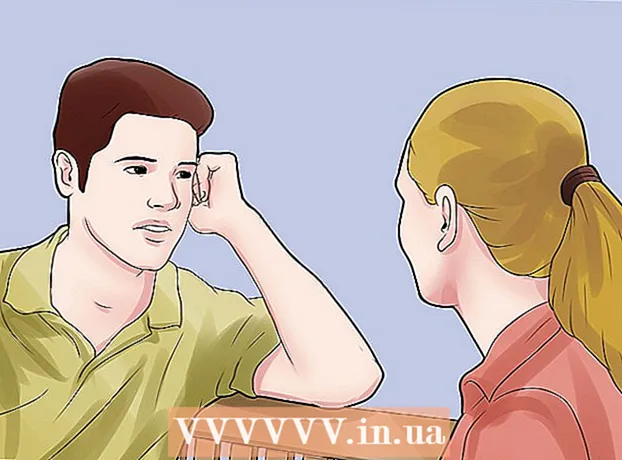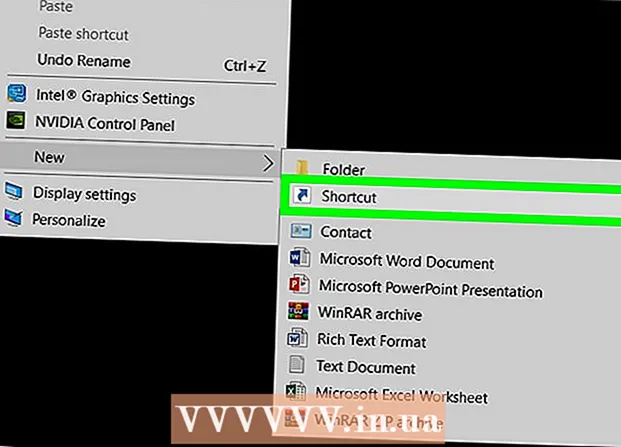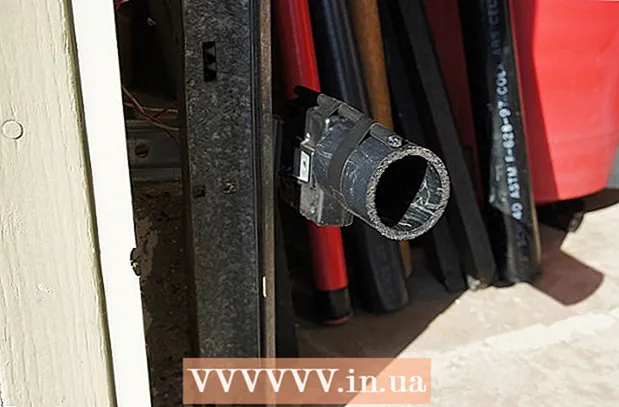Author:
Robert Simon
Date Of Creation:
17 June 2021
Update Date:
24 June 2024

Content
Mold can cause serious breathing problems and other ailments, so it should be removed as soon as possible. The method of removing mold from dry walls (also called drywall, non-plastered walls) depends on whether the dry wall has been painted or not. If the wall has been painted, you need to clean it with water and detergent. If not painted, the dry wall contaminated with mold should be removed because the surface is too porous, so it is difficult to clean.
Steps
Method 1 of 2: Walls covered or painted
Create ventilation in the room. To get rid of mold, you need chemical cleaning agents. Many of these products contain toxic substances if you inhale them, so keep windows and doors open while removing mold. Absolutely do not direct the fan into the room to prevent mold spores from spreading out everywhere. You can place a fan in an outward window to keep harmful air out of the room. Also, use plastic to cover your doors to prevent mold spores from spreading to other areas of your home.

Protect the surrounding area. To prevent damage to furniture caused by inadvertent spills of chemicals or cleaning products, you should protect all items from mold treatment. Move furniture and decorations to a corner or out of the room. Cover the floor with newspaper or plastic sheets and then use tape to fix the covering material. Have a rag ready to wipe off any detergent spills.
Choose a detergent. Detergents range from mild to strong and can be both natural and chemical. If you have children or pets in your home, consider using a mild, natural solution instead of a strong chemical solution. In the event of a serious mold infection, stronger chemicals may be needed.- Dissolve the baking soda with water in a 1: 5 ratio. Baking soda is the mildest and safest cleaning ingredient available that is often used to fight mold.
- Use pure vinegar or vinegar in a 1: 1 ratio. Vinegar is a bit stronger than baking soda, but it's natural and safe to use in the presence of children and pets.
- Use an unscented cleaner. One of the simplest ways to identify a mold is the musty smell, so using an odorless cleaner will ensure that there is no other scent that will keep you from detecting the mold smell. Despite being a chemical product, detergent is relatively safe to use in the presence of children and pets. Dissolve detergent with a small amount of water.
- Use bleach. Some people recommend bleach, but others do not. Bleach is opposed mainly to its strength and potential toxicity when inhaled. Some people even think that the effectiveness of bleach is not guaranteed. Still, bleach remains one of the most powerful, effective and safe cleaning agents for painted dry walls. Dissolve the bleach with water in a 1: 3 ratio.

Pour the cleaning solution into the spray bottle. Pour cleaning solution and water into a spray bottle and shake well. Make sure the solution dissolves evenly to make sure it works.
Spray a small amount of the solution on the mold. Do not wet the spray because the humidity is too high actually causes mold to multiply instead of being destroyed. Spray the solution on the mold 1-2 times, making sure each area is covered with solution but not so much that it is dripping.
Use an old toothbrush to scrub the mold. An abrasive dish washer can also be used. Scrub until the dirt or mold on the wall is gone.
Dry the wall. Mold can start to grow if you leave the wall damp. So you should direct the fan against the wall to dry faster.
Paint stain resistant. If there are still stains on the wall even after you have been scoured, you can apply the anti-stains primer and topcoat to cover it. advertisement
Method 2 of 2: Unpainted dry wall
Cover with plastic canvas on the floor. When you clean, mold spores can fall off dry walls. To prevent them from falling on the floor, use a plastic sheet to cover the floor and surrounding objects. Use tape to fix the plastic canvas.
Mark the moldy area on the wall. Use a pencil to draw a translucent square around the area where you see mold. This area is usually larger than the stain itself and spreads to at least two wooden wall beams behind the dry wall.Removing the wall wider than necessary will increase the chance of removing invisible mold spores and also make it easier to replace the wall that is contaminated with mold.
Use a multi-purpose knife to cut dry moldy walls. Use a knife to follow the line drawn, point the knife outward and away from people while slitting. Once the dry wall has come off, carefully remove it and place it under the plastic sheet so that the side has mold on it.
Clean the room with a vacuum cleaner with a HEPA (high efficiency air filter) filter. Mold spores can be disturbed during cleaning, and the HEPA vacuum cleaner will help you get rid of them.
If mold appears next to a door or window, ask someone to spray water on a door or window while leaving the interior wall open, and watch for water coming out. Sometimes it can take 5 minutes for the water to leak out. Once you've located it, you need to seal both the inside and outside of the wall to prevent moisture from entering (mold only appears in wet places).
According to expert recommendations, before replacing dry walls, you should paint on the holes in the wall with elastic paint like Kilz paint, and also paint behind the wall that you plan to replace. Cut off a new dry wall. Use a tape measure to measure the hole in the wall and then use a multi-purpose knife to cut a fresh piece of dry wall to fit the measurement.
Place the new dry wall in the hole. New dry walls should fit snugly and tight.
Fix a new dry wall patch. Use dry wall screws and a screwdriver to fix dry walls to the wood beams in the rear wall section.
Sealing seams with sealant material. You will need to fill the seams around the seams with material to help connect the new wall to the rest of the wall and seal the cracks in between.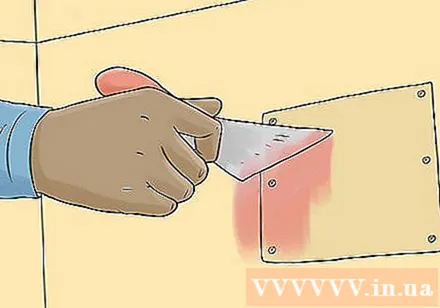
Scrub well after the plaster has dried. 24 hours after applying, use a sandpaper or a gentle sand blasting machine to smooth the dry fillings.
Use a HEPA vacuum cleaner to vacuum the entire area. Mold spores can fall on surrounding walls or on the floor, even if you are covered with plastic wrap. Use a HEPA vacuum cleaner to remove as much mold spores as possible. advertisement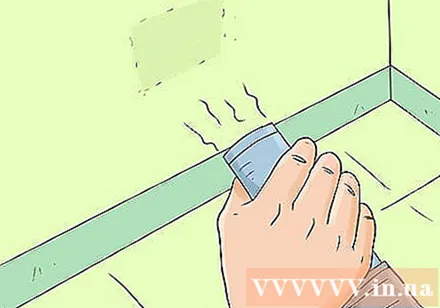
Warning
- Seek expert help if you can't handle the problem yourself. Black mold is especially toxic and needs to be handled professionally. For other types of mold, if they spread out in large patches on dry walls, you need to have a specialist deal with them. You may need a professional mold removal service if your home is damp, if someone has a breathing problem in the house, or if mold continues to appear and spread.
- Always wear protective equipment when removing mold. Wear a disposable mask to protect yourself from breathing in too many mold spores. Wear goggles and rubber gloves to protect your eyes and skin from mold and any chemicals you use to get rid of mold.
What you need
- Plastic canvas
- Aerosol
- Baking soda
- Vinegar
- Cleaning agent
- Bleach
- Brush or sponge
- Electric fan
- Pencil
- Multi-purpose knife
- Vacuum cleaner with HEPA filter
- Dry wall
- Dry wall screws
- Screwdrivers
- Seam fillings
- Sandpaper
